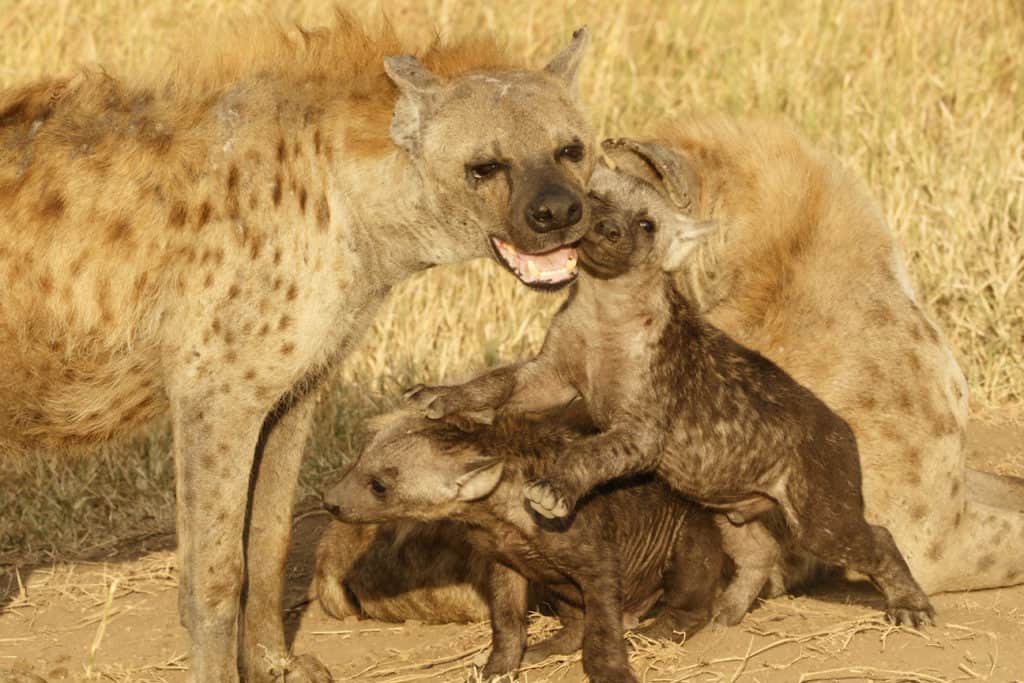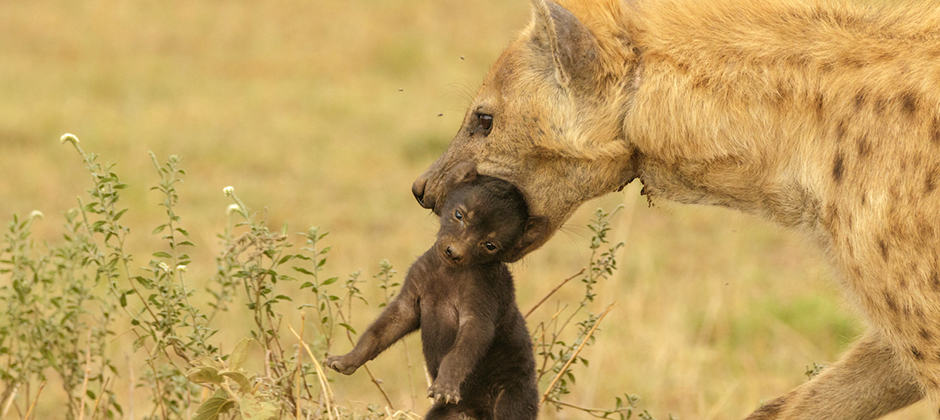Share this article
Snare injuries can reduce reproductive success in hyenas
When hyenas get trapped in illegally set snares intended for poaching herbivores for bushmeat, they may continue to live long lives, but their reproductive success can decline.
Since 1987, Leibniz Institute for Zoo and Wildlife Research biologists Marion East and Heribert Hofer have led a team closely monitoring spotted hyenas (Crocuta crocuta) in Serengeti National Park in Tanzania. They maintain records on every individual and take fecal samples to collect even more detailed genetic information for three hyena social groups.
“This allowed us in this context to see who is injured by snares and how badly,” said Sarah Benhaiem, formerly a former doctoral student at the institute who now leads the project with field coordinator Sonja Metzger. “Many projects on large carnivores, since they’re often elusive and solitary, rely on indirect observation methods such as camera traps. They usually don’t get to see all individuals very closely on a near-daily basis.”
But Benhaiem and her team could see hyenas just a few meters away, allowing them to spot snares still around their necks or legs sometimes, or to observe injuries from previous run-ins with the traps. To East, it seemed like females with severe injuries often had cubs that didn’t survive very long, Benhaiem said. She and her colleagues decided to find out if it was true.
She and master’s student Sara Kaidatzi co-led a study published in Animal Conservation comparing information about injured and uninjured spotted hyenas and their offspring. They reported 208 sublethal incidences snares or snare injuries involving 193 hyenas from 1987 to 2020.
Using the project’s long-term database, the team looked at female survival as well as how many cubs they had, when they had them and how many cubs survived to a year old.

Spotted hyenas that were injured in snares had smaller litters. Credit: Sonja Metzger/Leibniz-IZW
Snare injuries didn’t seem to negatively impact the females themselves, they found. “It was a bit surprising at first it didn’t have an effect on their own survival,” Benhaiem said, but hyenas are famously resilient. Even diseases that would be deadly to other animals can’t get past hyenas’ strong immune systems. “They are very robust and able to cope with those things,” she said.
But she and Kaidatzi did find that snare injuries correlated with reproductive issues. While 51% of uninjured hyenas’ cubs survived to one-year-old, only 42% of cubs from injured hyenas survived that long. Injured females produced smaller litters than non-snared hyenas—56% of uninjured hyena had twins, but only 36% of injured hyenas had twins. When they looked at age of reproduction, they found another discrepancy. Snared hyenas delayed having their first litter by an average of eight months.
It’s not clear why being snared affects reproduction, Benhaiem said. Maybe it’s related to elevated cortisol levels from stress. Maybe their immune systems are working harder. Or maybe injured hyenas don’t produce enough milk or are less efficient at hunting and traveling, spending too much time away from their cubs to feed them.
Hyenas are thought to be plentiful in the Serengeti, but it is possible that snares and roadkill, two important causes of death related to human activities, put their population at risk, Benhaiem said. Park management and conservation programs are working hard to find snares and remove them, she said, but it’s also important to better understand the motivations of poachers and the complex factors that may influence bushmeat consumption.
Header Image: A female spotted hyena in Serengeti National Park carries a cub. A snare injury is visible on the hyena’s neck. Credit: Sonja Metzger/Leibniz-IZW








